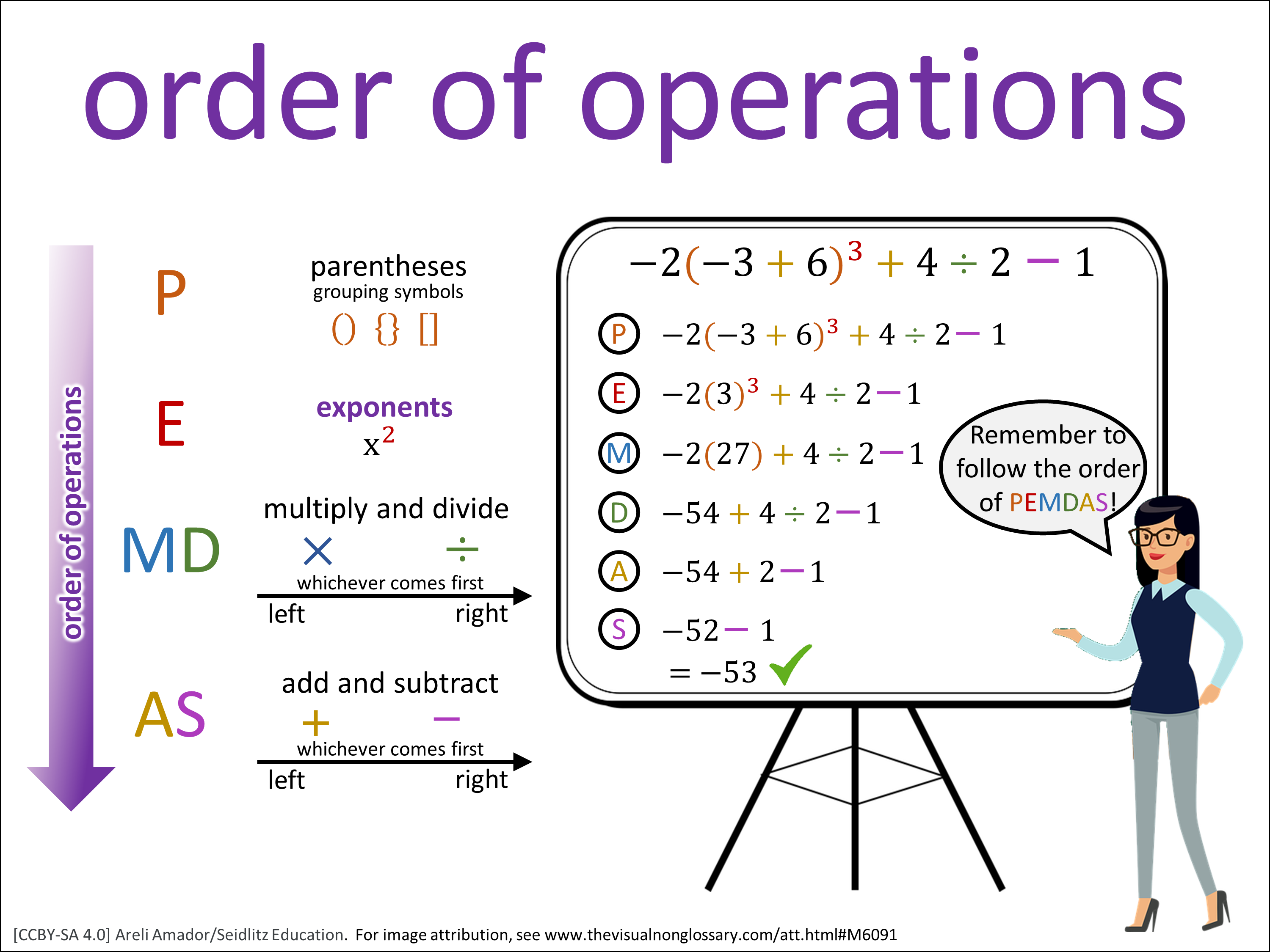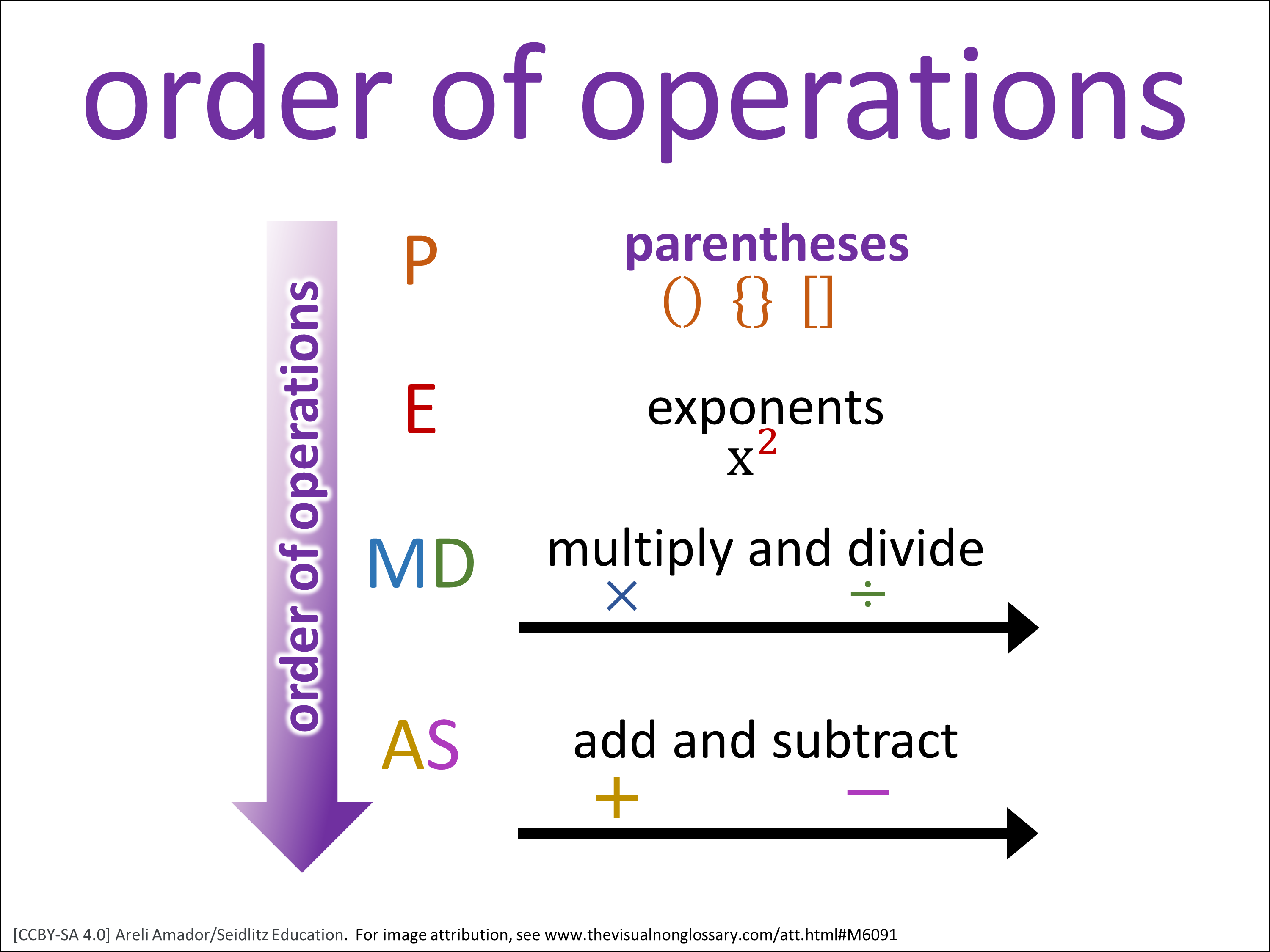order of operations: 6th Grade 🌐 Ver en Español
TEKS:
| 5th | 5.4(E), 5.4(F) |
| 6th | 6.7(A), 6.7(B), 6.7(C), 6.7(D) |
- Visual
- Word wall visual
- Lesson Plan
- Lesson Materials
Observational
What is order of operations?
The order of operations is...Relational
How is the order of operations related to an expression
The order of operations is related to an expression because...Inferential
(2x(3-4))²+6 has two sets of parentheses. How would you use the order of operations to simplify an expression like this?
I would use the order of operations to simplify an expression with two sets of parentheses by...
There is one set of parentheses
The result inside parentheses is raised to a power of 3
There’s a negative number multiplied in front: −2
There are multiple operations: addition, division, subtraction
The steps are labeled with P, E, M, D, A, S
After the observational question, randomly call on one or more students to share what they or their partner answered. Then ask the class, “Did anyone notice…?” using the suggestions above or anything else you’ve noticed.
What happens first, the parentheses or the exponent?
Why is −2 outside the parentheses?
Does the exponent apply to everything or just the number inside?
Can I do addition before division?
What does PEMDAS stand for?
After students have shared what they notice, ask the class, “Did anyone wonder…?” using the suggestions above or anything else you might think is interesting or relevant to the lesson.
To the observational question, What is order of operations?
LOW-LEVEL
The order of operations is the way you solve math problems step by step so you get the right answer.
HIGH-LEVEL
The order of operations is the set of rules that tells you which math operations to do first when solving a problem with parentheses, exponents, multiplication, division, addition, and subtraction.
Emphasize and celebrate each student’s use of the key vocabulary to support a culture of “no wrong answers.”



